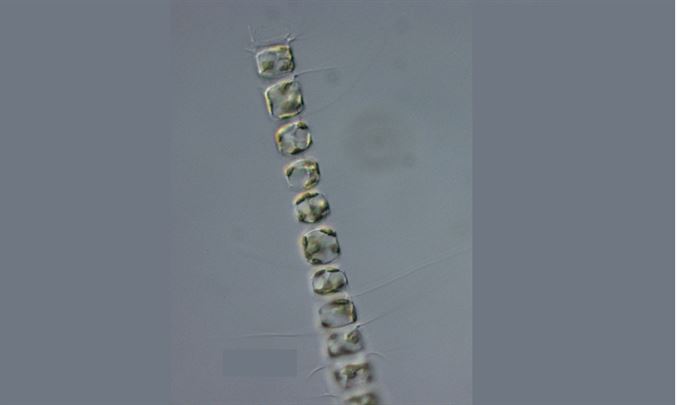The cells have a cylindrical shape with a broadly elliptical to circular cross-section. They form long, straight chains that are somewhat twisted along the chain axis. The valves, which are part of these cells, are generally flat or slightly convex in the center and have a low mantle.There are two types of intercalary setae present. The ordinary intercalary setae are regularly distributed along the chain but are delicate, making them somewhat challenging to observe with a standard light microscope. Occasionally, heavily silicified intercalary setae can also be found. These silicified setae are characterized by their great length, curvature, and strong orientation toward the nearest end of the chain. Towards the distal end, they almost align parallel to the chain axis. These setae originate within the valve margin, have a short basal portion, and merge at the edge of the chain. Their fusion occurs only at the point of intersection.The apertures in these cells are elliptical to hexagonal, moderately wide, and slightly constricted in the center. The cells contain numerous small, plate-like chloroplasts, which play a vital role in photosynthesis.
